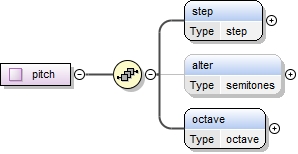| Namespace | No namespace | ||
|
Annotations
|
|
||
|
Diagram
|
 |
||
| Type | step | ||
|
Properties
|
|
||
|
Facets
|
|
||
|
Source
|
|
||
| Schema location | file:/C:/Users/mihai/Desktop/MusicXML-Schema/musicxml.xsd |


